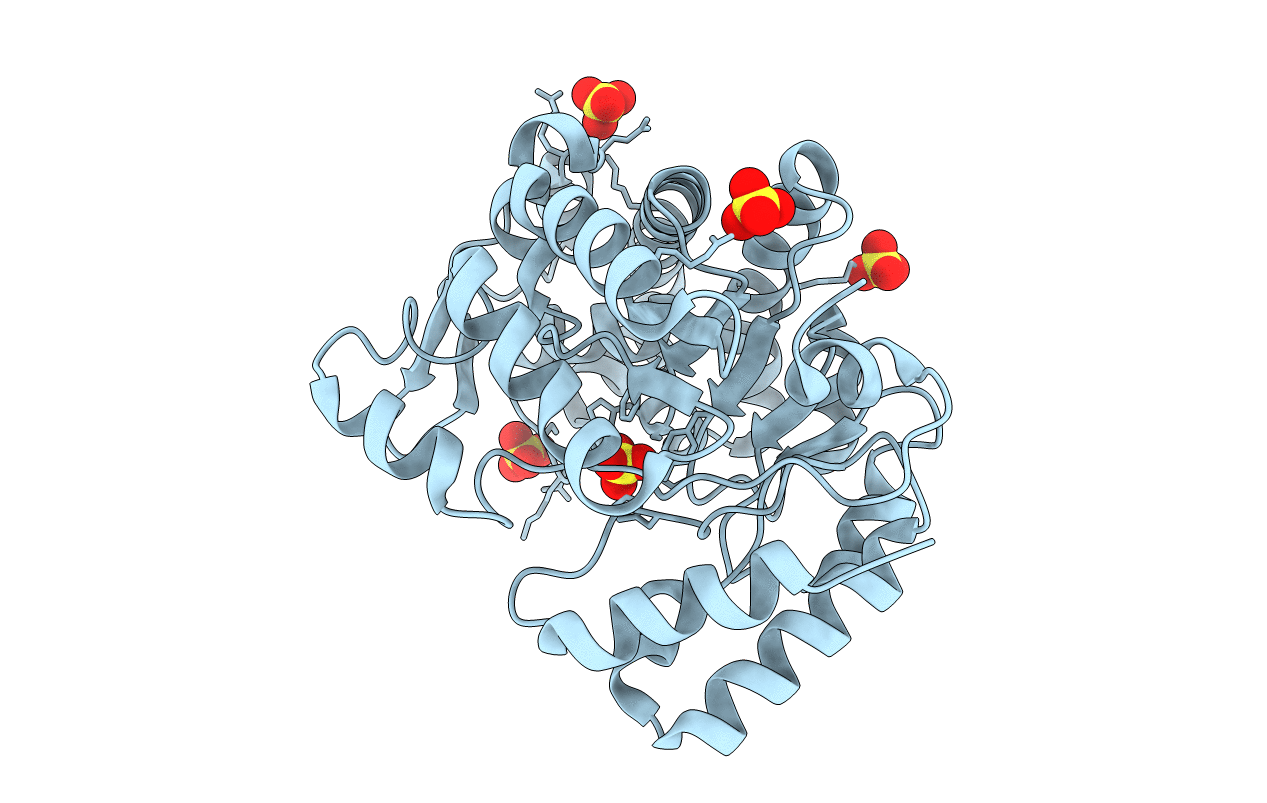
Deposition Date
2001-05-23
Release Date
2001-10-17
Last Version Date
2024-12-25
Entry Detail
PDB ID:
1J93
Keywords:
Title:
Crystal Structure and Substrate Binding Modeling of the Uroporphyrinogen-III Decarboxylase from Nicotiana tabacum: Implications for the Catalytic Mechanism
Biological Source:
Source Organism:
Nicotiana tabacum (Taxon ID: 4097)
Host Organism:
Method Details:
Experimental Method:
Resolution:
2.30 Å
R-Value Free:
0.25
R-Value Work:
0.20
Space Group:
P 6 2 2


